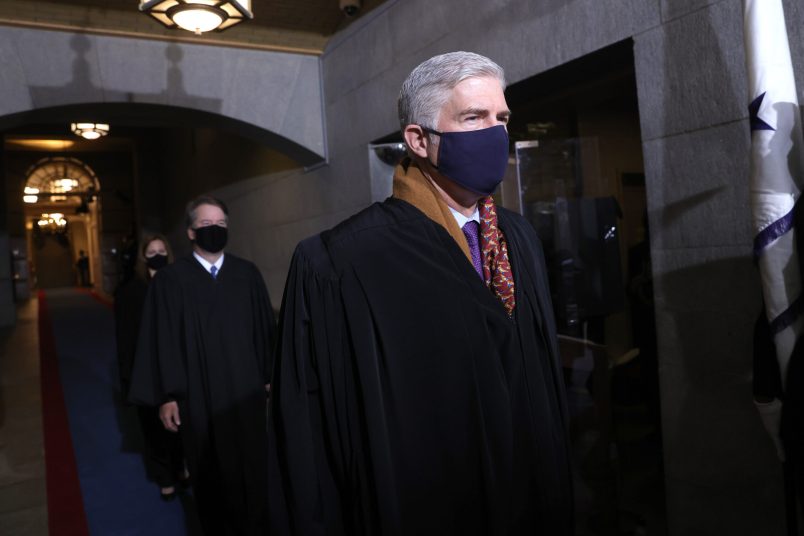The Supreme Court Monday put on hold a lower court ruling that would have forced Alabama to redraw its congressional maps that disenfranchised Black voters.
It was a 5-4 decision. Chief Justice John Roberts joined with the liberals in dissent.
The Court will make a decision on the case challenging the maps in the coming months. It’s a signal that the conservative justices are prepared to further weaken Section 2 of the Voting Rights Act.
The conservative majority did not explain its reasoning in Monday’s order. Justice Brett Kavanaugh did write a concurring opinion, attempting to rebut Justice Elena Kagan’s dissent.
“That decision does a disservice to our own appellate processes, which serve both to constrain and to legitimate the Court’s authority,” wrote Kagan in a scathing dissent. “It does a disservice to the District Court, which meticulously applied this Court’s longstanding voting-rights precedent. And most of all, it does a disservice to Black Alabamians who under that precedent have had their electoral power diminished—in violation of a law this Court once knew to buttress all of American democracy.”
Roberts was milder in his separate dissent, though he pointed out the real world ramifications of the Court’s decision — that the 2022 election will be governed by maps a lower court found to disenfranchise Black voters.
“The District Court’s analysis should therefore control the upcoming election,” he wrote. “The practical effect of this approach would be that the 2022 election would take place in accord with the judgment of the District Court, but subsequent elections would be governed by this Court’s decision on review.”
Alabama had asked the Court to grant a stay after a surprising loss at the hands of a panel of U.S. district judges — two of three of whom are Trump appointees.
The panel found that the Alabama congressional map likely violated the Voting Rights Act, and ordered the state legislature to draw a new map where Black voters constitute a majority “or something quite close to it” in two of the seven districts.
In asking the Supreme Court to intervene, the state is arguing, counterintuitively, that drawing a new map with two majority-Black districts would in fact be an unconstitutional racial gerrymander, in violation of the VRA.
The district judges had appointed a special master to draw a map showing that such districts could be crafted in accordance with the legal rules governing these kinds of cases — including that the districts be compact and politically cohesive. The state said that in drawing the map, the expert prioritized race over other traditional barometers of redistricting, making it unconstitutional.
Alabama is trying to set up a catch-22. The state says that drawing a map based on race is unconstitutional; but to bring a successful VRA vote dilution lawsuit, plaintiffs have to show that a map properly empowering the minority community is possible to draw — requiring drawing a map based, at least in part, on racial composition.
The only way to draw minority-majority districts, by Alabama’s logic, is if it basically happens by accident.
If the justices accept this reasoning, it’s hard to see how any voter bringing a claim of minority vote dilution would go about proving it.
“Accepting Alabama’s contentions would rewrite decades of this Court’s precedent about Section 2 of the VRA,” Kagan wrote.



